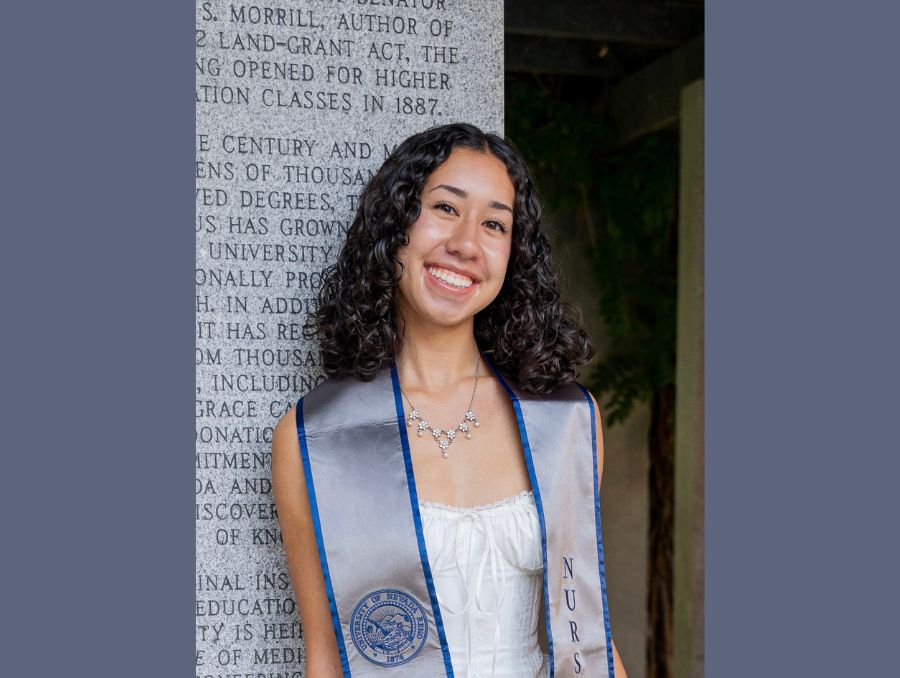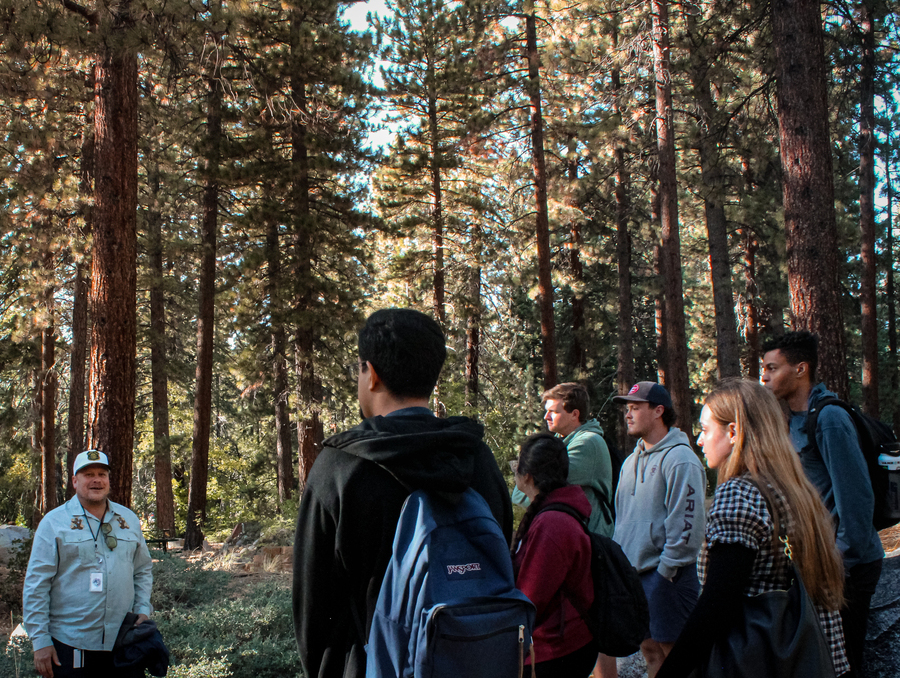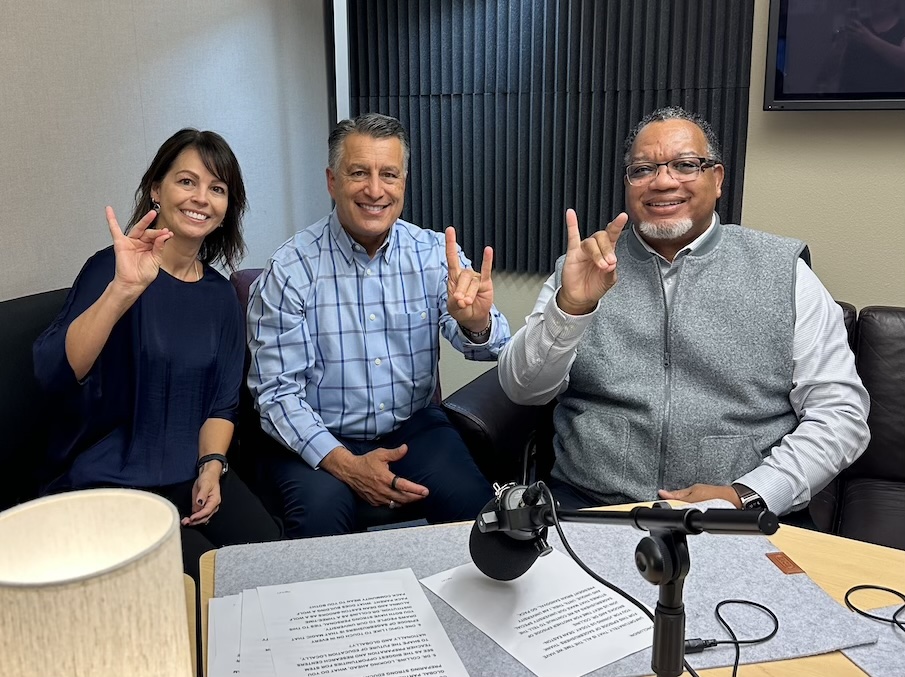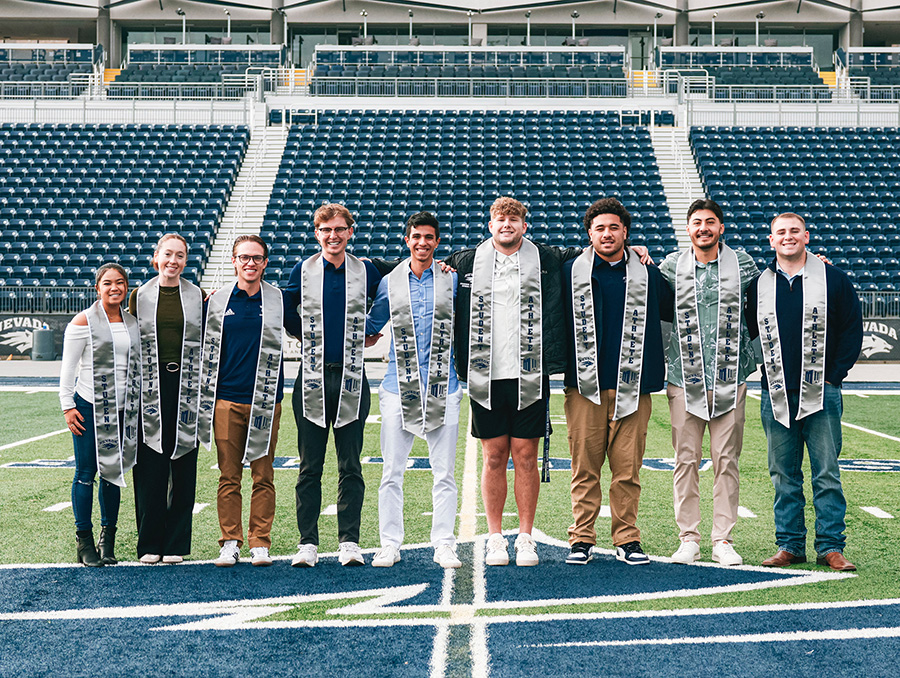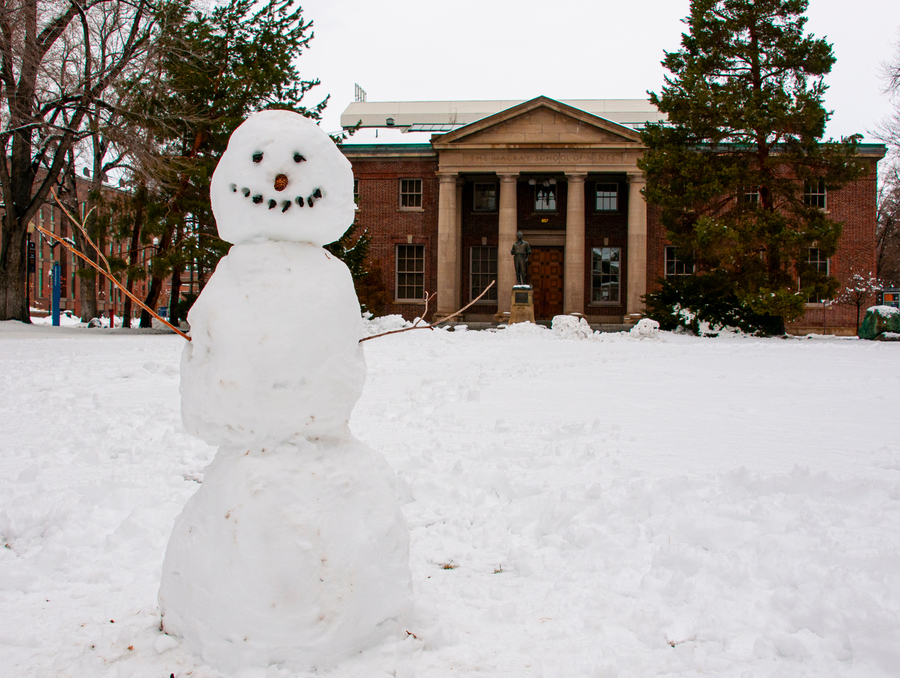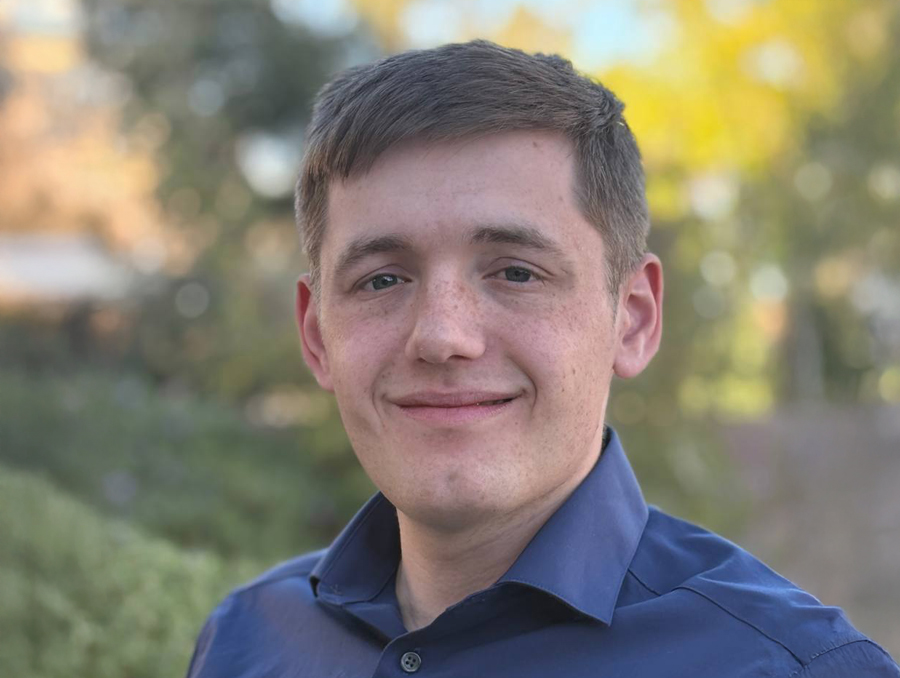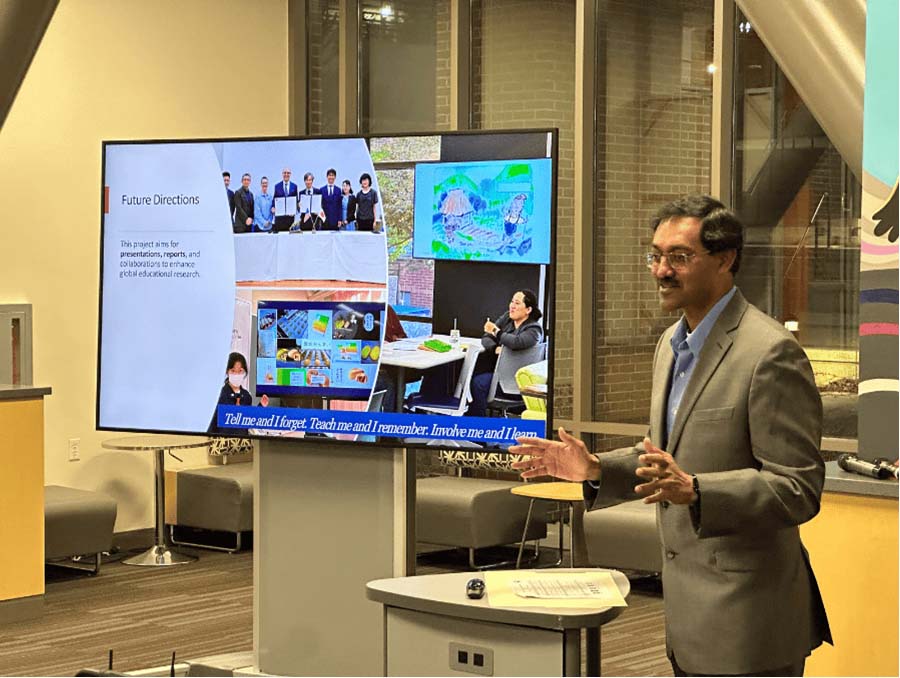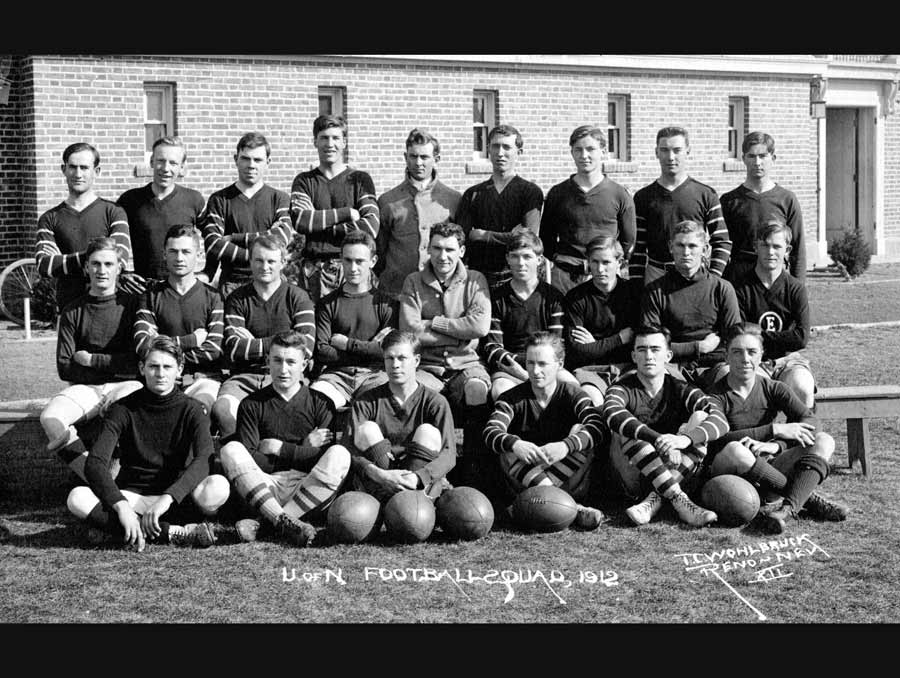President Marc Johnson's "State of the University Address" on Wednesday emphasized how the University of Nevada, Reno hopes to capitalize in the coming months and years on institutional gains and achievements that have touched all aspects of campus.
"We have forged a feasible and attainable path for our future," Johnson told a standing-room only crowd of about 250 in the Glick Ballroom of the Joe Crowley Student Union, as well as an online audience that watched the streaming event live via the University's website. "We have the mechanisms in place for a very exciting future for you, and for our University."
Johnson cited numerous examples where the University had attained record-breaking levels of achievement in student enrollment, retention, philanthropy, research and community engagement. He said such milestones were illustrative of a "sense of energy and enthusiasm on our campus. Everywhere you turn, you see a culture of student success, world-improving research and creativity, and the type of vital engagement that enhances our communities and businesses."
With a record enrollment of 19,934 students, more than 300 National Merit and Presidential Scholars on campus, and with student-centered construction projects such as the new residence community, Peavine Hall (scheduled to open next fall), as well as the William N. Pennington Student Achievement Center (scheduled to open on the site of the old Getchell Library in January 2016), Johnson applauded the effort of faculty, staff and students in helping the University be an institution "that has refused to quit" after a period of budget and staffing reduction five and a half years ago.
"We're now at a point where the shared sacrifice of the past several years has become an opportunity for our University to build on our institutional success and momentum," Johnson said. "All of us are working diligently to build careers and programs. We are collectively working to grow the reputation of this fine University.
"Your work serves as the foundation for major, sustainable growth ahead."
Through a combination of increased revenue through tuition and fees paid by students, state funding, contracts and grants and philanthropy, Johnson said he was optimistic that the University would continue on a trajectory that over the past year "has continued to arch upward, even accelerate."
Johnson cited four goals that will serve as the foundation for the University's planning: preparing to reach the projection of a 22,000-student enrollment by 2021, though Johnson conceded, with a smile, that given the campus' 6.2 percent growth in this area in 2014, "we could reach it by 2017"; reducing the student to faculty ratio from 21.6-1 to 18 to 1; attaining the Carnegie classification of "Research University/Very High"; serving as a key economic driver for the diversification of the regional economy.
Johnson said last spring's University Capacity Study conducted by the University's budget office indicated that it will take between 250 and 272 tenure-track hires over the next seven years to reach the first three goals, as well as a "balanced set of support personnel to maintain productivity, efficiency and effectiveness."
"We believe this is financially feasible with the revenue enhancement plans mentioned earlier," Johnson said of the University's four streams of revenue. He added that tenure-track hires will be an important piece of the equation, as "they seem to offer the clearest path for us to accomplish our teaching mission while at the same time building capacity in research and scholarship."
Johnson also said reaching a student to faculty ratio of 18-1 in the coming years will also be a point of emphasis. "Achieving an 18 to 1 student to faculty ratio in the next few years will mean that we're reducing the number of courses taught per faculty member," he said. "This ties directly into my final point that we are actively engaged in restoring the balance between teaching and research for our faculty which is common at peer institutions. This is a serious issue, and we're taking important steps to remedy it."
Johnson explained the rationale behind the push for "Research University/Very High" status: "This effort will align us with other major regional universities such as at the Universities of Utah, New Mexico, Arizona and Oregon. As we make the push for this classification, we will be building our capacity in a number of vital areas, including the quality and number of our faculty, as well as our number of grant-based employees and graduate students. Additionally, ascension to Research University/Very High will cement our position as a pillar for economic development and innovation in the region and state."
Given the ambitious goals of the future, Johnson said it was important that the University remain grounded in the present, and address pressing issues. Among them: space on campus.
"If we are to grow to serve 22,000 students, take our student to faculty ratio to 18 to 1, and achieve Carnegie Research University/Very High Status, we must grow our space for research and for our colleagues," he said. "Space remains a top priority for the University. Our full design schedule includes projects to address these pressures for which designers are under contract."
Johnson said the University is moving on several projects to address the space issue, including plans for construction of a new Engineering building, renovation of Scrugham and Palmer Engineering Buildings, conversion of former teaching labs in Physics and Chemistry to research labs, construction of a new Fine Arts Building and renovation of spaces being re-purposed for laboratory and office uses, such as Thompson Hall.
Johnson said the University, as part of the legislative agenda for the Nevada System of Higher Education, will be advocating for the elimination of furloughs, adding funds for classified salary step increases and longevity costs, and adding a professional merit raise of 2.5 percent. He also said that, working in concert with Faculty Senate, the administration will engage in a comprehensive salary review. He said the review will define and suggest strategies in dealing with problems such as salary compression and equity by gender and underrepresented faculty groups. He said the study, which will be conducted in 2015-2016, will be completed prior to salary distribution in July 2017.
Johnson also lauded the campus for engaging with its community partners in ways that have helped strengthen the connection between the City of Reno and the campus. He cited the work of the Strategic Plan and Master Plan, headed by Provost Kevin Carman, as "historic" in nature and in scope, in that they've "opened doors we weren't sure would ever open."
"The University has been in active dialogue and discussion with the City of Reno, the Regional Transportation Commission, as well as individuals from our community in developing a Master Plan that will provide a physical connection with our community. We are actively pursuing a strategy that will extend our University footprint and develop properties not just a single block south of campus, but several blocks south of campus."
In conclusion, Johnson said that the University and its people are "poised to make a profound difference in the life of our campus. Now we are in a place where growth will be matched with resources."
